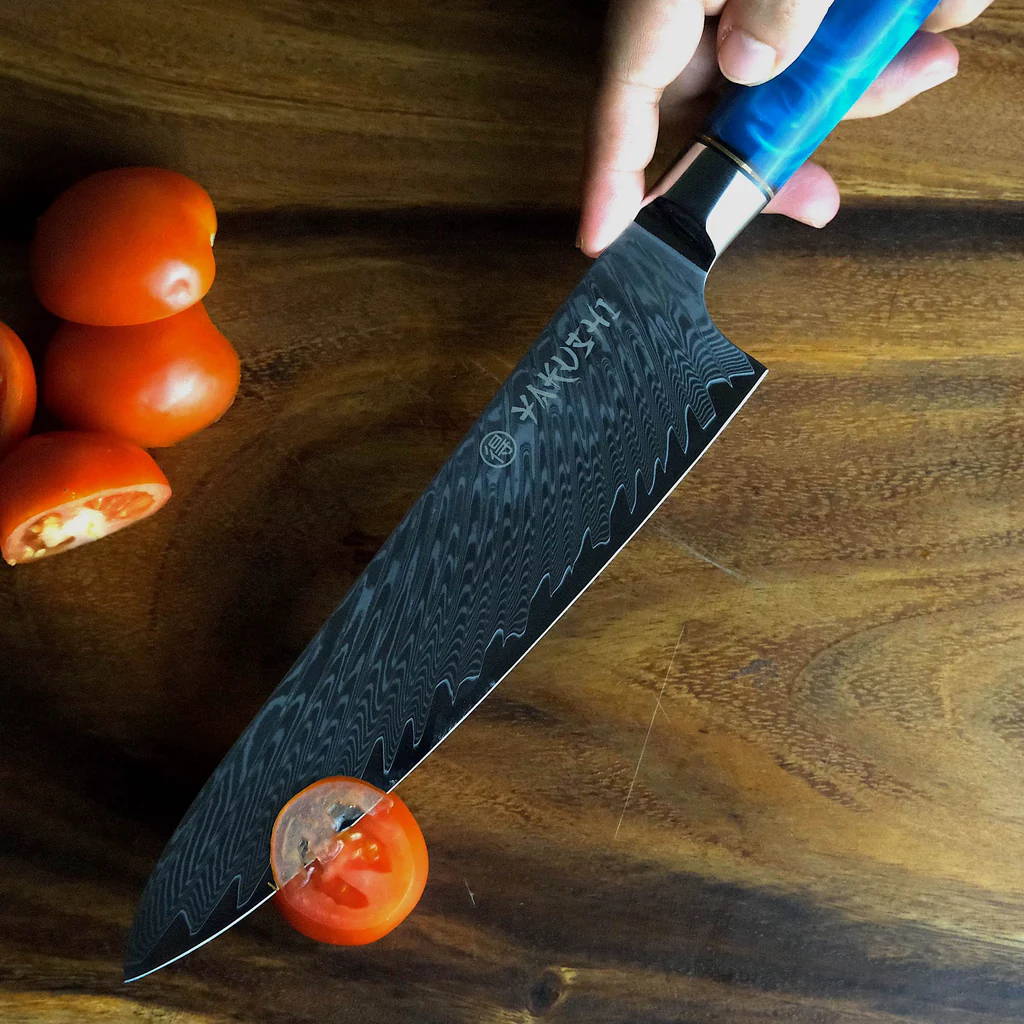Spotting Genuine Damascus
Steel Knives: A Guide
Damascus steel Knives have long held prestigious status from the times of ancient civilizations. People have always admired them for their amazing quality and craftsmanship. These knives aren’t just tools-they represent strength, toughness, and beautiful artwork. Each knife is carefully crafted by hand using the best possible materials. They are super sharp and always have fascinating patterns on them that can easily catch your attention. However, there are many vendors that are selling their duplicates. Therefore, it is important that you can differentiate the real from the fake. But how to tell if Damascus is real? Well, in this blog post, you are going to learn about the tactics that will help you spot the original Damascus steel knife.

Characteristics of Genuine Damascus Steel
Genuine Damascus steel knives possess several distinctive characteristics:
Pattern
The one thing that makes real Damascus steel knives distinctive is their eye-catching patterns. It's like they've got their own signature style! Patterns of Damascus steel knives have some swirls and layers on the blade that are created through a technique called "damascening," which involves repeatedly heating and folding the steel to create a tightly packed lattice structure.
Strength and Durability
Authentic Damascus steel Knives exhibit exceptional strength and durability as the knives typically consist of three layers of carbon-rich steel combined with low-carbon steel. In Japan, VG-10 steel, which is known for its superior quality, is often used for making these knives. In their making, the bladesmiths skillfully combine VG-10 stainless steel with Japanese nickel Damascus steel to achieve the desired properties. The layering of these steels not only creates stunning visual patterns but also determines the blade's overall strength and durability.
Flexibility
Despite their hardness, genuine Damascus steel knives retain a degree of flexibility, allowing for precise cutting and slicing without brittleness. Damascus steel knives get their flexibility from high-carbon steel gives a hard, sharp edge, while low-carbon steel adds elasticity. This combination creates a blade that resists snapping despite its sharp edge.
Identification of Fakes
How to tell if a knife is real Damascus? To answer this question, spotting counterfeit Damascus steel knives involves recognizing common signs of imitation:
Pattern Replication
Counterfeit knives often feature artificial patterns created through etching or laser engraving, lacking the depth and complexity of genuine Damascus steel.
Material Analysis
Genuine Damascus steel is forged from high-quality materials, while counterfeit knives may use inferior materials or alloys, compromising quality and performance.
Testing Methods
To confirm the authenticity of a Damascus steel knife, various testing methods can be employed:
Acid Etching
Acid etching is a common technique used to reveal the distinctive patterns of Damascus steel. Genuine knives will exhibit crisp, well-defined patterns under acid etching, while counterfeits may display artificial or inconsistent Damascus pattern types.
Hardness Testing
Authentic Damascus steel knives typically exhibit high hardness levels, confirming their quality and durability.
Common misconceptions
There's a common belief that the more layers a Damascus chef knife has, the better its quality. However, that's not necessarily the case. While the intricate patterns of Damascus steel knives catch the eye, what truly matters is the quality of the steel and the expertise of the craftsman behind it.
Interestingly, some knives with fewer layers can outperform those with a higher layer count. It all boils down to the craftsmanship and the blade's ability to maintain its edge over time.
Another misconception is that uniformity in the Damascus Kiritsuke knife pattern signifies authenticity. Yet, genuine Damascus steel often exhibits variations and irregularities in its pattern due to the unique forging and folding techniques used during production. These idiosyncrasies not only enhance the individuality of each knife but also serve as evidence of its handcrafted origin.
In conclusion
How to tell if Damascus is real? answering this common question with this amazing guide that will help you to distinguish real Damascus steel knives in a market full of imitations. Let’s take a quick go-through. You can spot the genuine blades through their elaborate damascening patterns that highlight their distinctive aesthetic. Additional to this, authentication may be verified using testing techniques like acid etching and hardness testing. With these insights, you can confidently select a genuine Damascus steel knife.

